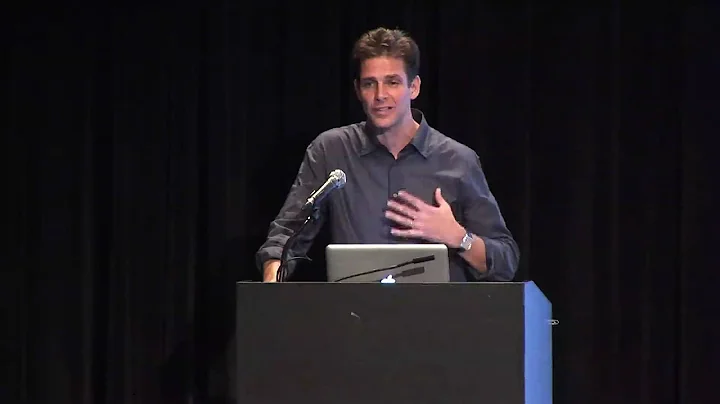Peter L De
from New York, NY
- Also known as:
-
- Peter Del Wallace
- Peter L Wallace
- Helen W Wallace
- Peter Der Lwallace
- Peter E
Peter De Phones & Addresses
- New York, NY
- Sarasota, FL
- Studio City, CA
- Sherman Oaks, CA
- Los Angeles, CA
Us Patents
-
Determining And Using Acoustic Confusability, Acoustic Perplexity And Synthetic Acoustic Word Error Rate
view source -
US Patent:7219056, May 15, 2007
-
Filed:Apr 19, 2001
-
Appl. No.:09/838449
-
Inventors:Scott Elliot Axelrod - Mt. Kisco NY, US
Peder Andreas Olsen - New York NY, US
Harry William Printz - San Francisco CA, US
Peter Vincent de Souza - San Jose CA, US -
Assignee:International Business Machines Corporation - Armonk NY
-
International Classification:G10L 15/00
G06F 7/60 -
US Classification:704235, 703 2, 704236, 704246, 704251
-
Abstract:Two statistics are disclosed for determining the quality of language models. These statistics are called acoustic perplexity and the synthetic acoustic word error rate (SAWER), and they depend upon methods for computing the acoustic confusability of words. It is possible to substitute models of acoustic data in place of real acoustic data in order to determine acoustic confusability. An evaluation model is created, a synthesizer model is created, and a matrix is determined from the evaluation and synthesizer models. Each of the evaluation and synthesizer models is a hidden Markov model. Once the matrix is determined, a confusability calculation may be performed. Different methods are used to determine synthetic likelihoods. The confusability may be normalized and smoothed and methods are disclosed that increase the speed of performing the matrix inversion and the confusability calculation. A method for caching and reusing computations for similar words is disclosed.
-
Droplet Extraction From A Liquid Column For On-Chip Microfluidics
view source -
US Patent:8304253, Nov 6, 2012
-
Filed:Oct 19, 2006
-
Appl. No.:12/090922
-
Inventors:Uichong Brandon Yi - Los Angeles CA, US
Peter Patrick De Guzman - Orange CA, US
Wayne Liu - Los Angeles CA, US
Chang-Jin Kim - Beverly Hills CA, US -
Assignee:Advanced Liquid Logic Inc - Research Triangle Park NC
-
International Classification:B01D 57/00
B01L 99/00 -
US Classification:436177, 436174, 436180, 422500, 422502, 422504
-
Abstract:A refill droplet facilitates the extraction of a droplet laterally from a channel in a microfluidic apparatus. Such extraction allows a discrete band of separated particles or solute molecules to be excised from a fluid stream and processed and analyzed separately. An extraction point is located along the length of the channel and includes an EWOD surface or similar microfluidic technology to extract a droplet. An opening in the channel opposite the extraction means is equipped with microfluidic technology to transport a refill droplet to the opening. The refill droplet is moved into the channel or column to occupy the area previously occupied by the extracted droplet. This prevents distortion or mixing of the bands of particles or molecules within the channel and prevents the draining of any portion of the fluidic system.
-
Object Carrier
view source -
US Patent:51691990, Dec 8, 1992
-
Filed:Feb 1, 1991
-
Appl. No.:7/649418
-
Inventors:Peter J. de Ruyter - Northridge CA
John R. Bryant - Van Nuys CA
Roland H. Schneider - Marina del Rey CA -
International Classification:B66C 112
-
US Classification:294149
-
Abstract:Disclosed is an object carrier comprising a combination of a strap member and a hook-and-fabric-type fastener. The fabric element of the hook-and-fabric-type fastener covers substantially the entire external surface of the strap member. A ring is attached to one end of the strap member and the hook element of the hook-and-fabric-type fastener is attached to the other end. There is a handle on the external surface near the ring. The strap member is wrapped tightly about an object to be carried, with the hook element drawn through the ring and then passed into engagement with the fabric element.
-
Automotive Audio System Speaker Enclosure
view source -
US Patent:D2611376, Oct 6, 1981
-
Filed:Dec 15, 1978
-
Appl. No.:5/969875
-
Inventors:Peter G. De Lillo - Staten Island NY
-
International Classification:D1401
-
US Classification:D14 33
-
Automatic Determination Of Labels And Markov Word Models In A Speech Recognition System
view source -
US Patent:50724525, Dec 10, 1991
-
Filed:Nov 2, 1989
-
Appl. No.:7/431720
-
Inventors:Peter F. Brown - New York NY
Peter V. De Souza - Yorktown Heights NY
Michael A. Picheny - White Plains NY -
Assignee:International Business Machines Corporation - Armonk NY
-
International Classification:G10L 506
-
US Classification:381 43
-
Abstract:In a Markov model speech recognition system, an acoustic processor generates one label after another selected from an alphabet of labels. Each vocabulary word is represented as a baseform constructed of a sequence of Markov models. Each Markov model is stored in a computer memory as (a) a plurality of states; (b) a plurality of arcs, each extending from a state to a state with a respective stored probability; and (c) stored label output probabilities, each indicating the likelihood of a given label being produced at a certain arc. Word likelihood based on acoustic characteristics is determined by matching a string of labels generated by the acoustic processor against the probabilities stored for each word baseform. Improved models of words are obtained by specifying label parameters and constructing word baseforms interdependently and iteratively.
Wikipedia References

Peter B. De Menocal
Resumes

Peter De
view source
Peter De
view source
Peter De
view source
Peter Kruif De
view source
Peter De
view source
Peter De
view sourceLocation:
United States
Googleplus

Peter De
Tagline:
Alter Brummbaer, dirty old man

Peter De

Peter De

Peter De

Peter De
Youtube
Get Report for Peter L De from New York, NY












